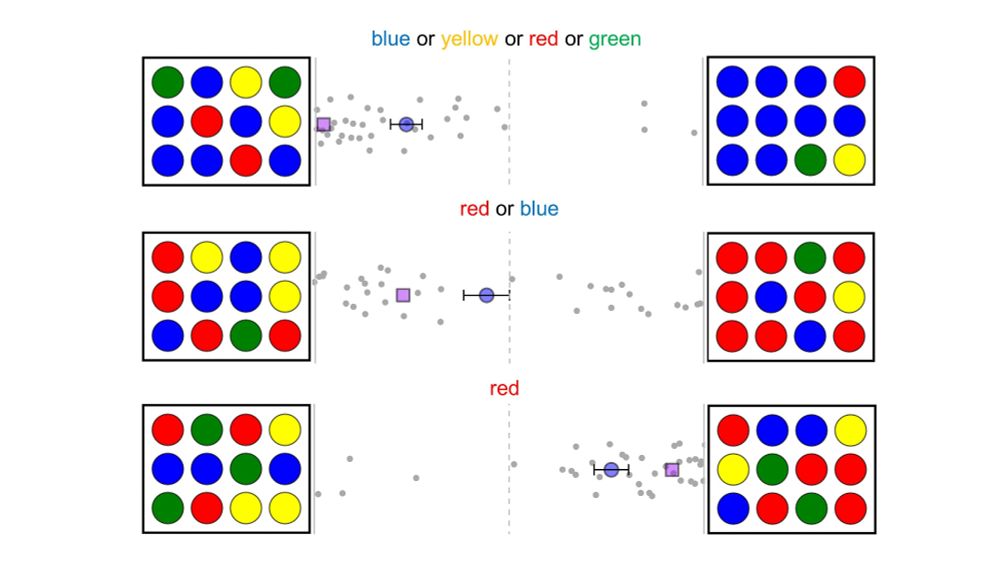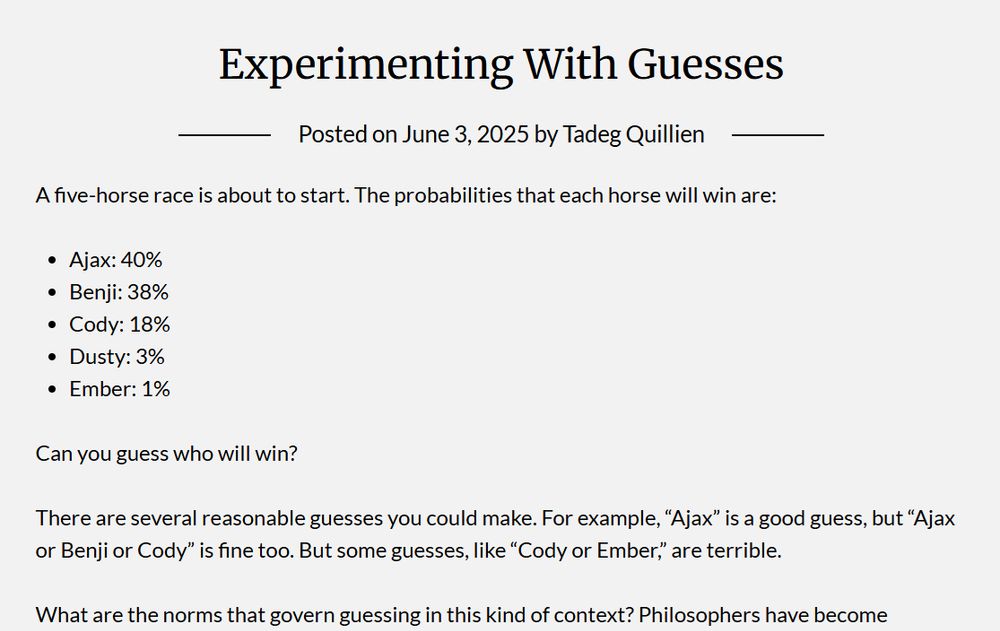Lab: https://quillienlab.github.io/
www.pnas.org/doi/10.1073/...

www.pnas.org/doi/10.1073/...


www.pnas.org/doi/10.1073/...

www.pnas.org/doi/10.1073/...

This tendency only reverses if group membership has very low task relevance.

This tendency only reverses if group membership has very low task relevance.
Agents have limited cognitive resources: they can only extract so much information from the environment, and have to prioritize which information to encode (group membership or individuating info).

Agents have limited cognitive resources: they can only extract so much information from the environment, and have to prioritize which information to encode (group membership or individuating info).

As expected, recent events are less 'stable', i.e. more likely to be replaced by counterfactual alternatives:

As expected, recent events are less 'stable', i.e. more likely to be replaced by counterfactual alternatives:

A fascinating paper by Ozdemir and Walker finds some hints of this pattern in 5- to 7-year old children.
static1.squarespace.com/static/5615d...


A fascinating paper by Ozdemir and Walker finds some hints of this pattern in 5- to 7-year old children.
static1.squarespace.com/static/5615d...

www.sciencedirect.com/science/arti...


www.sciencedirect.com/science/arti...
The conjunction fallacy makes sense given the logic of guessing: sometimes "A&B" conveys a better picture of your subjective distribution than "A".

The conjunction fallacy makes sense given the logic of guessing: sometimes "A&B" conveys a better picture of your subjective distribution than "A".
People tend to say that a guess is good if it encodes a distribution (as inferred by the model) that assigns high probability to the correct answer.

People tend to say that a guess is good if it encodes a distribution (as inferred by the model) that assigns high probability to the correct answer.
We argue that these intervals implicitly encode a subjective probability distribution: the interval midpoint and width encode the mean and variance.

We argue that these intervals implicitly encode a subjective probability distribution: the interval midpoint and width encode the mean and variance.


To find out, we ran an 'inverted' version of the previous study. Participants were given a guess made by someone else, and had to infer which box the speaker was looking at.

To find out, we ran an 'inverted' version of the previous study. Participants were given a guess made by someone else, and had to infer which box the speaker was looking at.
(Sometimes participants looking at the same box make different guesses. This typically happens when the model thinks these are equally good guesses!)

(Sometimes participants looking at the same box make different guesses. This typically happens when the model thinks these are equally good guesses!)

Their ratings are well-predicted by an information-theoretic measure of how faithfully the guess conveys the shape of the true distribution.

Their ratings are well-predicted by an information-theoretic measure of how faithfully the guess conveys the shape of the true distribution.


Namely, their guess functions to encode their subjective probability distribution over what Danielle might be studying:

Namely, their guess functions to encode their subjective probability distribution over what Danielle might be studying:
xphi.net/2025/06/03/e...

xphi.net/2025/06/03/e...
Main finding: people have a robust expectation that agents who feel empathy are more likely to help, especially when helping is costly.
quillienlab.github.io/Horner%20et%...


Main finding: people have a robust expectation that agents who feel empathy are more likely to help, especially when helping is costly.
quillienlab.github.io/Horner%20et%...

